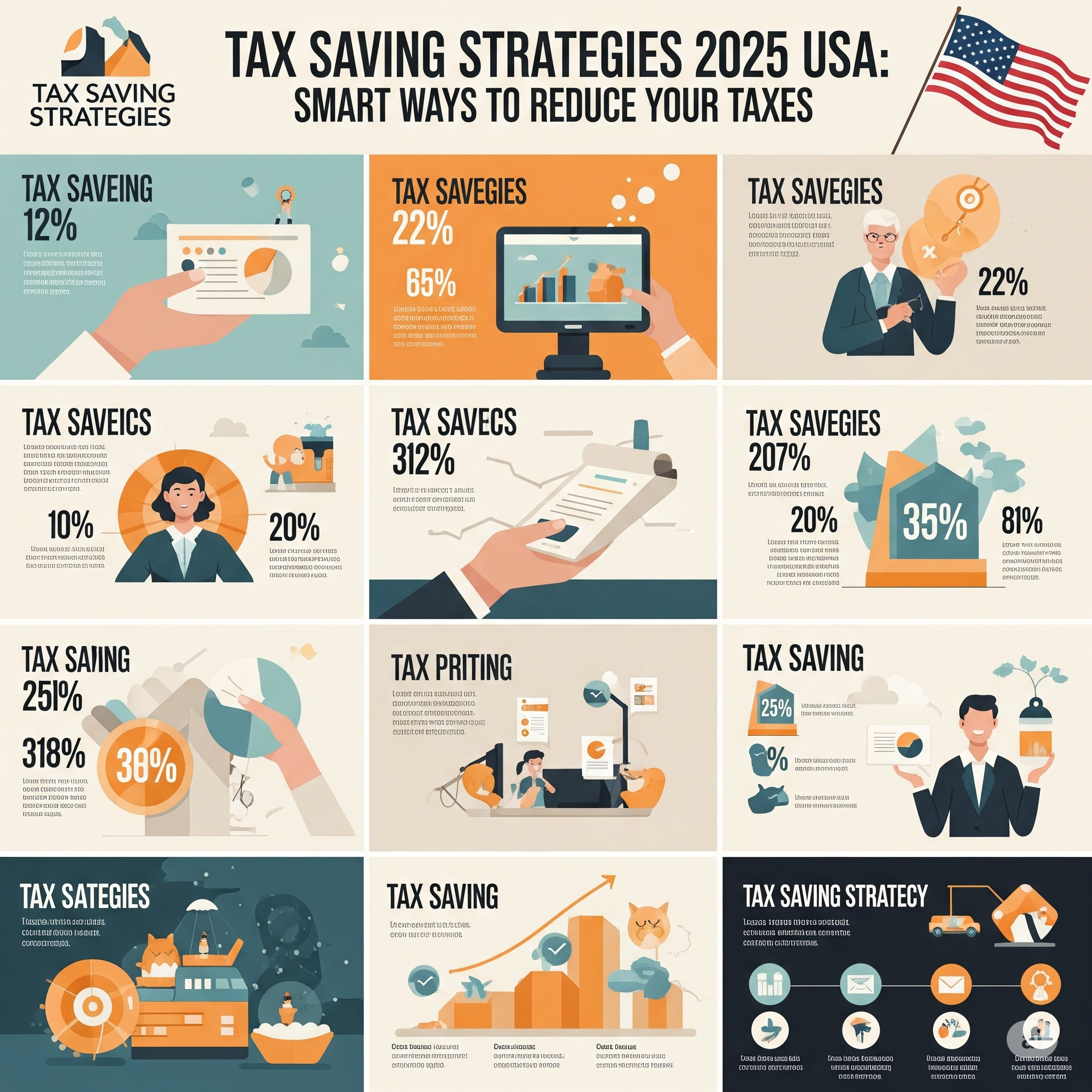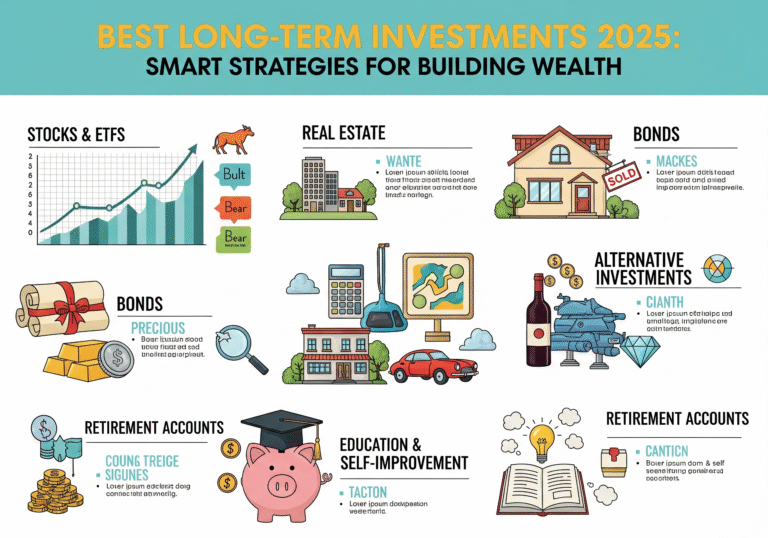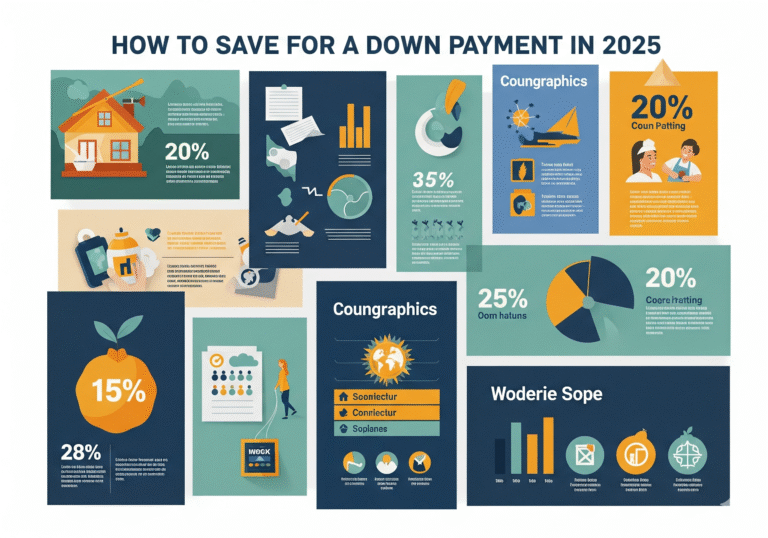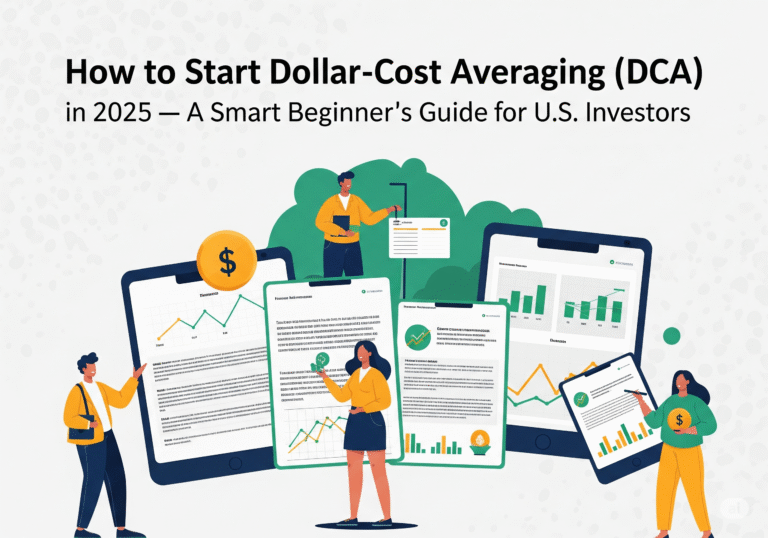Tax Saving Strategies 2025 USA: Smart Ways to Reduce Your Taxes
Tax Saving Strategies 2025 USA
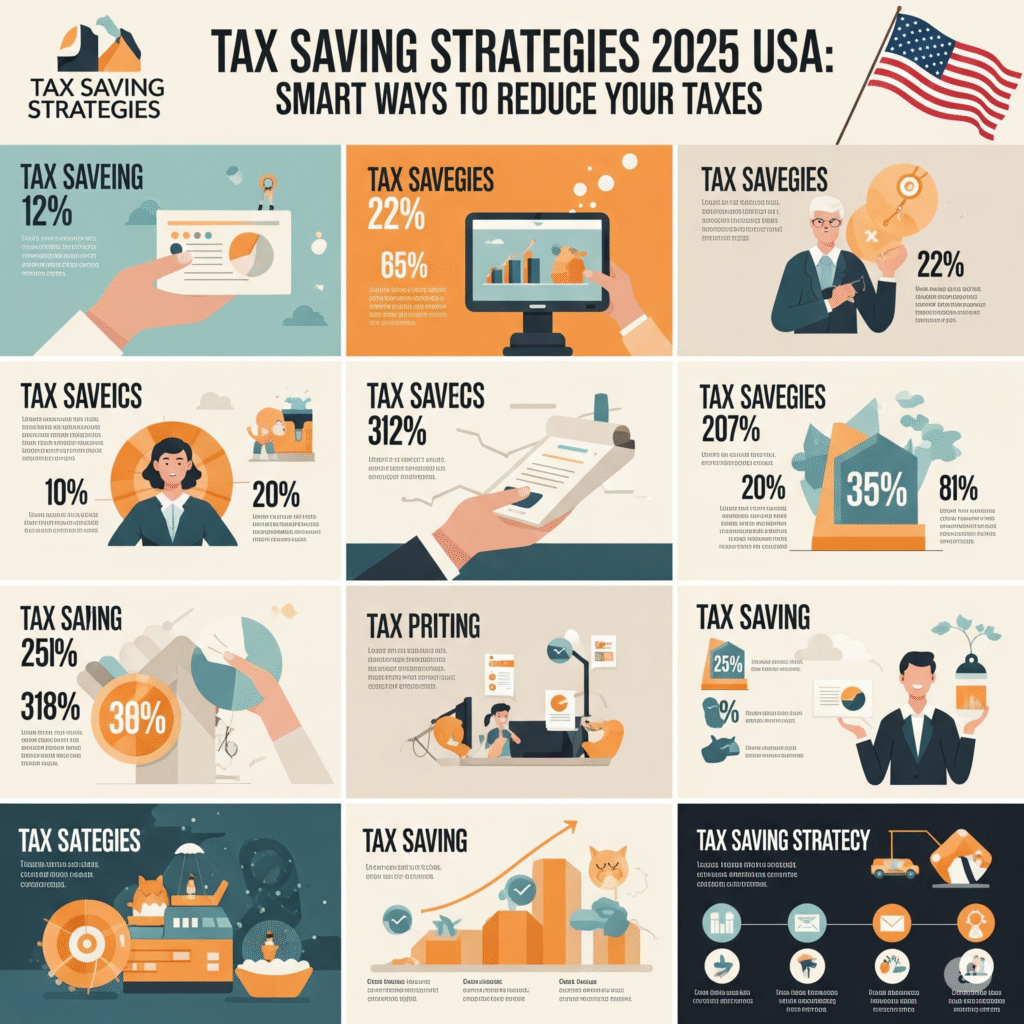
Introduction Of Tax Saving Strategies 2025 USA
Although tax season can be a stressful time, you can lawfully lower your tax liability and keep more of your hard-earned money if you plan beforehand. As 2025 approaches, American taxpayers can take advantage of a number of tactics, credits, and deductions that can have a significant impact. Gaining knowledge of tax-saving techniques is crucial for financial development, regardless of whether you work as a salaried employee, independent contractor, or small business owner.
This post will outline realistic and doable strategies to reduce taxes in 2025 while adhering to US tax regulations.
Why Tax Planning Matters in 2025 AND Tax Saving Strategies 2025 USA
For 2025, the IRS has modified a number of tax brackets and standard deductions to account for inflation. This means that even if your income hasn’t changed substantially from the previous year, your tax liability might. Effective tax preparation guarantees that you:
- Only pay what is required by law.
- Make the most of your available credits and deductions.
- Make wise investments to lower taxable income.
- Create lasting riches while adhering to IRS regulations.
1.Max Out Retirement Contributions
Contributions to retirement accounts are among the best ways to reduce taxes in 2025. Contributions help you increase your future savings and lower your taxable income.
- The 2025 401(k) contribution limit is $23,500, with a $7,500 catch-up if you are over 50.
- The 2025 IRA Contribution Limit is $7,000, plus $1,000 for those over 50.
While your investments grow tax-deferred, each dollar you deposit into these accounts reduces your taxable income today.
2.Use Health Savings Accounts (HSA)
Contributions to an HSA, one of the most tax-advantaged accounts accessible, are permitted if you are a member of a high-deductible health plan.
- Tax deductions are available for contributions.
- Growth within the account is exempt from taxes.
- Tax-free withdrawals are permitted for approved medical costs.
The maximum contribution for 2025 is $4,300 for individuals and $8,650 for families.
3.Claim All Eligible Tax Credits
Credits immediately lower your tax liability, dollar for dollar. In 2025, popular credits include:
- CTC (kid Tax Credit): Up to $2,000 for each kid under the age of 17.
- For those with low to moderate incomes, the Earned Income Tax Credit (EITC)
- American Opportunity Tax Credit (AOTC): For college students (up to $2,500)
- Lifetime Learning Credit: Up to $2,000 for continuing education
Since IRS regulations are subject to change, review eligibility annually.
4. Leverage Itemized Deductions
Itemizing could save you extra money if your deductions surpass the 2025 standard deduction, which is $14,900 for individuals and $29,800 for married couples filing jointly. Typical deductions consist of:
- Interest on a mortgage
- Local and state taxes (SALT, up to $10,000)
- Donations to charities
- Medical costs that exceed 7.5% of AGI
The secret to optimizing these savings is maintaining well-organized receipts.
5.Invest in Municipal Bonds
The interest you earn from municipal bonds is tax-free at the federal level, which makes them appealing. It is frequently also state tax-free if you reside in the issuing state. These assets are perfect for conservative investors since they offer consistent income and are less risky than equities.
6.Use Capital Gains Planning AND Tax Saving Strategies 2025 USA
How long you hold onto your investments is important if you invest in stocks, ETFs, or real estate:
- Gains that are kept for less than a year are subject to normal income tax.
- Gains that last longer than a year possess tax rates that are lower (0%, 15%, or 20%).
Longer investment holding periods can result in significant tax savings. Another wise 2025 tactic is tax-loss harvesting, which involves selling lost investments to offset gains.
7.Maximize Business Deductions (For Self-Employed & Small Businesses) AND Tax Saving Strategies 2025 USA
If you are a freelancer or own your own firm, you can deduct:
- Expenses for the home office
- Travel for business
- Purchases of equipment
- Subscriptions to software
- Premiums for health insurance
Additionally, eligible business income may be deducted up to 20% under the Qualified Business Income (QBI) deduction.
8.Take Advantage of 529 College Savings Plans AND Tax Saving Strategies 2025 USA
Education expenses continue to rise, but contributing to a 529 plan helps. While contributions aren’t federally deductible, growth and withdrawals for qualified education expenses are tax-free. Many states also offer additional tax deductions or credits.
9.Consider Roth Conversions AND Tax Saving Strategies 2025 USA
A Roth IRA allows tax-free withdrawals in retirement. If you expect higher taxes later in life, consider converting some of your traditional IRA or 401(k) funds into a Roth in 2025. You’ll pay taxes now, but enjoy tax-free growth and withdrawals in the future.
10.Stay Updated on Tax Law Changes AND Tax Saving Strategies 2025 USA
Tax laws, credits, and thresholds are updated on a regular basis by the IRS. You can avoid missing opportunities by using current tax software or consulting a tax specialist. In 2025, your filing may be impacted by new green energy incentives, student loan interest regulations, and inflation changes.
Final Thoughts Of Tax Saving Strategies 2025 USA
Saving money on taxes in 2025 involves more than just lowering your expenses; it also involves making better plans. There are numerous ways to lower your tax liability under the U.S. tax code, including retirement contributions, credits, HSAs, and investing techniques.
The secret is to prepare ahead, maintain organization, and use all of your available tactics. To customize these tactics for your circumstances, if your finances are complicated, think about speaking with a certified public accountant or tax counselor.
You may lower your obligation, keep more of your money, and get closer to your financial objectives in 2025 and beyond by employing these tax-saving techniques.
revenge-saving-how-americans-are-bouncing-back

